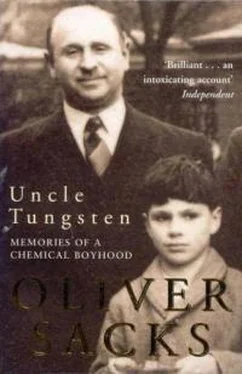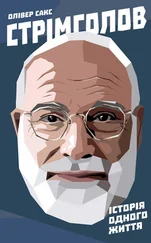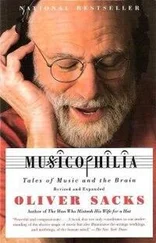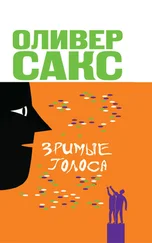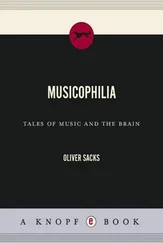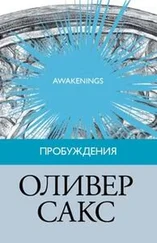With this achievement, public interest in the Curies exploded, spreading equally to their magical new element and the romantic, heroic husband-and-wife team who had dedicated themselves so totally to its exploration. In 1903, Marie Curie summarized the work of the previous six years in her doctoral thesis, and in the same year she received (with Pierre Curie and Becquerel) the Nobel Prize in physics.
Her thesis was immediately translated into English and published (by William Crookes in his Chemical News ), and my mother had a copy of this in the form of a little booklet. I loved the minute descriptions of the elaborate chemical processes the Curies performed, the careful, systematic examination of radium’s properties, and especially the sense of intellectual excitement and wonder that seemed to simmer beneath the even-toned scientific prose. It was all down-to-earth, even prosaic – but it was a sort of poetry, too. And I was attracted by the notices on its covers for radium, thorium, polonium, uranium – all of these were freely available, to anyone, for fun or experiment.
There was an advertisement from A.C. Cossor, in Farringdon Road, a few doors from Uncle Tungsten’s place, selling ‘pure radium bromide (when available), pitchblende… Crooke’s high-vacuum tubes, showing the fluorescence of various minerals…[and] other scientific materials.’ Harrington Brothers (in Oliver’s Yard, not far away) sold a variety of radium salts and uranium minerals. J.J. Griffin and Sons (later to become Griffin & Tatlock, where I went for my own chemical supplies) were selling ‘Kunzite – the new mineral, responding in a high degree to the emanations from radium’, while Armbrecht, Nelson & Co. (a cut above the rest, in Grosvenor Square) had polonium sulphide (in tubes of one gram, twenty-one shillings) and screens of fluorescent willemite (sixpence for a square inch). ‘Our newly invented Thorium inhalers’, they added, ‘may be had on hire.’ What, I wondered, was a thorium inhaler? Would one feel braced, strengthened, inhaling the radioactive element?
No one seemed to have any idea of the danger of these stuffs at this time. [61]Marie Curie herself mentioned in her thesis how ‘if a radio-active substance is placed in the dark in the vicinity of the closed eye or of the temple, a sensation of light fills the eye’, and I often tried this myself, using one of the luminous clocks in our house, their figures and hands painted with Uncle Abe’s luminous paint.
I was particularly moved by the description in Eve Curie’s book of how her parents, restless one evening and curious as to how the fractional crystallizations were going, returned to their shed late one night and saw in the darkness a magical glowing everywhere, from all the tubes and vessels and basins containing the radium concentrates, and realized for the first time that their element was spontaneously luminous. The luminosity of phosphorus required the presence of oxygen, but the luminosity of radium arose entirely from within, from its own radioactivity. Marie Curie wrote in lyrical terms of this luminosity:
One of our joys was to go into our workroom at night when we perceived the feebly luminous silhouettes of the bottles and capsules containing our products… It was really a lovely sight and always new to us. The glowing tubes looked like faint fairy lights.
Uncle Abe still had some radium in his possession, left over from his work on luminous paint, and he would show me this, pulling out a vial with a few milligrams of radium bromide – it appeared to be a grain of ordinary salt – at the bottom. He had three little screens painted with platinocyanides – lithium, sodium, and barium platinocyanide – and as he waved the tube of radium (gripped in a pair of tongs) near the darkened screens, these lit up suddenly, becoming sheets of red, then yellow, then green fire, each fading suddenly as he moved the tube away again.
‘Radium has lots of interesting effects on substances around it’, he said. ‘The photographic effects you know, but radium also browns paper, burns it, pits it, like a colander. Radium decomposes the atoms of the air, and then they recombine in different forms – so you smell ozone and nitrogen peroxide when you are around it. It affects glass – it turns soft glasses blue, and hard glasses brown; it can also color diamonds and turn rock salt a deep, intense violet.’ Uncle Abe showed me a piece of fluorspar which he had exposed to radium for a few days. Its original color had been purple, he said, but now it was pale, charged with strange energy. He heated the fluorspar a little, far below red heat, and it suddenly gave off a brilliant flash, as if it were white-hot, and returned to its original purple.
Another experiment Uncle Abe showed me was to electrify a silk tassel – he did this by stroking it with a piece of rubber – so that its threads, now charged with electricity, repelled one another and flew apart. But as soon as he brought the radium near, the threads collapsed, their electricity discharged. This was because radioactivity made the air conducting, he said, so the tassel could not hold its charge anymore. An extremely refined form of this was the gold-leaf electroscope in his lab – a sturdy jar with a metal rod through its stopper to conduct a charge and two tiny gold foil leaves suspended from this. When the electroscope was charged, the gold leaves would fly apart just like the threads of the tassel. But if one brought a radioactive substance near the jar, it would immediately discharge, and the leaves would drop. The sensitivity of the electroscope to radium was amazing – it could detect a thousand-millionth of a grain, millions of times less than the amount one could detect chemically, and it was thousands of times more sensitive even than a spectroscope.
I liked to watch Uncle Abe’s radium clock, which was basically a gold-leaf electroscope with a little radium inside, in a separate, thin-walled glass vessel. The radium, emitting negative particles, would gradually get positively charged, and the gold leaves would start to diverge – until they hit the side of the vessel and got discharged; then the cycle would start all over again. This ‘clock’ had been opening and closing its gold leaves, every three minutes, for more than thirty years, and it would go on doing so for a thousand years or more – it was the closest thing, Uncle Abe said, to a perpetual motion machine.
* * *
What had been a mild puzzle with uranium had become a much more acute one with the isolation of radium, a million times more radioactive. While uranium could darken a photographic plate (though this took several days) or discharge an ultrasensitive gold-leaf electroscope, radium did this in a fraction of a second; it glowed spontaneously with the fury of its own activity; and, as became increasingly evident in the new century, it could penetrate opaque materials, ozonize the air, tint glass, induce fluorescence, and burn and destroy the living tissues of the body, in a way that could be either therapeutic or destructive.
With radiation of every other sort, going all the way from X-rays to radio waves, energy had to be provided by an external source; but radioactive elements, apparently, had their own power and could emit energy without decrement for months or years, and neither heat nor cold nor pressure nor magnetic fields nor irradiation nor chemical reagents made the least difference to this.
Where did this immense amount of energy come from? The firmest principles in the physical sciences were the principles of conservation – that matter and energy could neither be created nor destroyed. There had never been any serious suggestion that these principles could ever be violated, and yet radium at first appeared to do exactly that – to be a perpetuum mobile , a free lunch, a steady and inexhaustible source of energy.
Читать дальше
